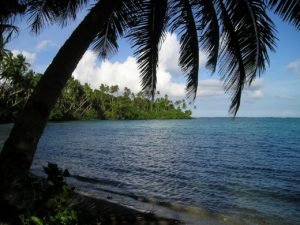
A study* examines Samoans’ evolutionary history. Prior research estimates that the initial settlement of Samoa occurred approximately 2,750–2,880 years ago. However, several studies have found that Samoa’s landscape underwent limited human modification until approximately 1,000–1,500 years ago. To better understand Samoa’s history, Timothy O’Connor and colleagues analyzed 1,197 Samoan genomes that were sequenced through the Trans-Omics for Precision Medicine Project and compared the genomes with a global reference set of 2,324 samples. Samoans were most closely related with other Oceanic populations, followed by East Asians, primarily from the Mekong Peninsula and South China. The majority of European ancestry came from West Europe, consistent with Samoa’s European colonial history. On average, Samoans had almost 25% ancestry from Papuan-speaking groups, which is less than other Polynesian cultures. Samoans from Savai’i Island were genetically different from those on Upolu Island, though there was a large overlap between both populations. The authors detected a significantly reduced population size beginning approximately 300 years ago on both islands, corresponding with the introduction of European diseases. However, an increase in effective population size of more than 10,000 individuals occurred approximately 900–1,050 years ago, coinciding with archaeological evidence of widespread landscape modification. The results suggest that the population structure in Samoa developed approximately 1,500–3,000 years ago, according to the authors.
___________________________

The population structure in Samoa developed approximately 1,500–3,000 years ago. Image courtesy Simon Steinberger, Pixabay
___________________________
Article Source: PNAS news release
*“Evolutionary history of modern Samoans,” by Daniel N. Harris et al.
___________________________
Advertisement



